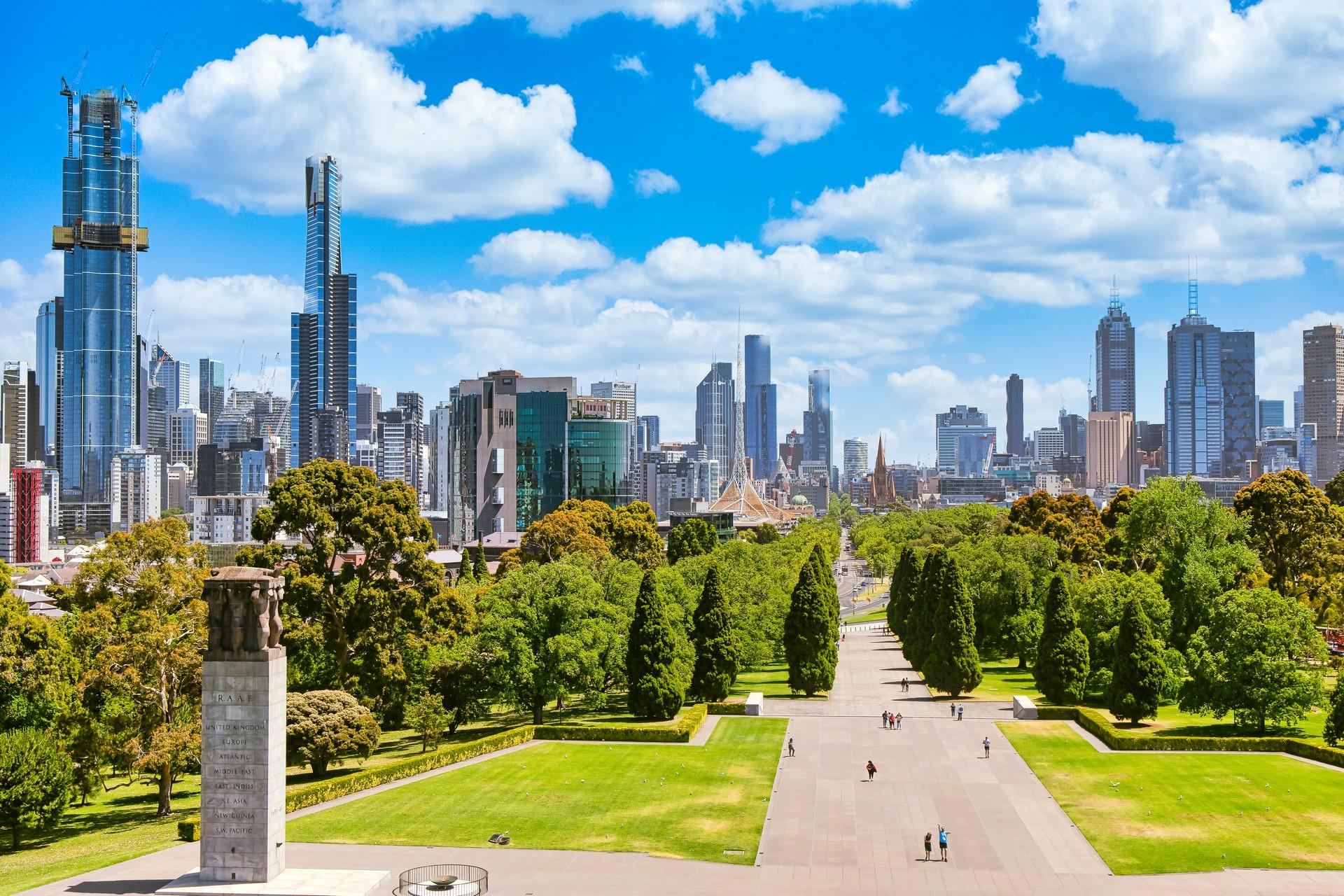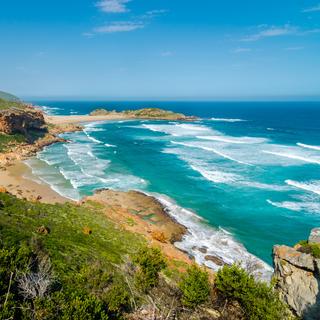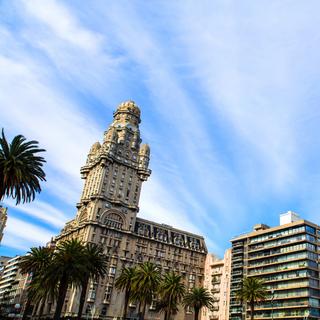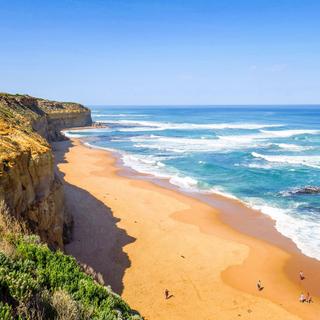
Melbourne weather and climate

Melbourne weather and climate
Day
16 °C
Night
7 °C
Sea
11 °C
Precipitation
51 mm
in month
Rainy days
11 days
in month
Daylight
11 hours
average
Sunshine
5 hours
average
Humidity
67 %
Weather charts for Melbourne
Destinations nearby and activities
Destinations nearby
Activities in Melbourne

Find more destinations like this
Destinations with similar weather to Melbourne
Other destinations in Victoria - Australia
Closest cities for Melbourne
Weather overview for Melbourne
Weather overview
Melbourne (Australia) in general has a hot climate. The day temperatures range from 14 °C (58 °F) in July to 27 °C (80 °F) in January. The highest night temperatures could be experienced in February with 15 °C (59 °F), the lowest in July with 6 °C (44 °F). The driest month is February with just 6 days of rain, on the contrary, the month when it rains the most is August with 11 days of rain.
January weather
The tourist season continues in Melbourne. The maximum of the day temperature is observable, with its value of 27 °C (80 °F). The beginning of the descent of the rainfall amount could be noticed, with its value being 46 mm (1.81 in), while the descent of the number of rainy days can be observed, with its value of 6 days. The maximum of the number of sun hours (without clouds) can be noticed, the value of this measure is 9 hours.
February weather
The tourist season continues in Melbourne. The number of rainy days reaches its minimum, its value is 6 days, while the descent of the rainfall amount can be observed, its value is 41 mm (1.60 in). The maximum of the night temperature is observable, its value is 15 °C (59 °F). The number of sun hours (without clouds) descent's start could be observed.
March weather
The tourist season is taking place in March in Melbourne. The day temperature starts to descent, with its value of 25 °C (76 °F). The number of rainy days starts to rise, with its value being 7 days, while the rainfall amount reaches its minimum, its value is 39 mm (1.53 in). The number of sun hours (without clouds) descents similarly to the previous month, with its value of 7 hours.
April weather
The tourist season is taking place this month in Melbourne. The descent of the day temperature can be observed, and the night temperature descents similarly to the previous month as well, with its value being 11 °C (52 °F). The rise of the number of rainy days can be observed, with its value being 8 days, while the rainfall amount rise's start could be observed, with its value of 48 mm (1.88 in).
May weather
The ongoing tourist season is noticeable in Melbourne. The descent of the day temperature can be observed, with its value being 18 °C (64 °F), and the night temperature descents similarly to the previous month as well, with its value being 9 °C (48 °F). The number of rainy days rises similarly to the previous month, its value is 9 days. The descent of the number of sun hours (without clouds) can be observed, the value of this measure is 4 hours.
June weather
The descent of the day temperature can be observed in Melbourne, and the night temperature descents similarly to the previous month as well, its value is 7 °C (45 °F). The rise of the number of rainy days can be observed, with its value of 10 days. The number of sun hours (without clouds) reaches its minimum, with its value being 4 hours. The maximum of the humidity is observable, the value of this measure is 74 %.
July weather
The minimum of the day temperature can be noticed, the value of this measure is 14 °C (58 °F) in Melbourne, and the minimum of the night temperature is observable as well, with its value of 6 °C (44 °F). The number of sun hours (without clouds) rise's start could be observed, its value is 4 hours.
August weather
The day temperature rise's start could be observed, with its value being 16 °C (60 °F) in Melbourne, and the night temperature rise's start could be observed too in August. The maximum of the number of rainy days is observable. The rise of the number of sun hours (without clouds) can be observed.
September weather
The rise of the day temperature can be observed, the value of this measure is 18 °C (64 °F) in Melbourne, and the night temperature rises similarly to the previous month too, with its value of 8 °C (47 °F). The rise of the number of sun hours (without clouds) can be observed, with its value of 6 hours. The wind speed is on its maximum in September.
October weather
The rise of the day temperature can be observed, with its value being 20 °C (68 °F) in Melbourne, and the night temperature continues to rise as well, its value is 9 °C (49 °F). The tourist season is at its beginning. The number of rainy days starts to descent, with its value being 10 days, on the contrary the rainfall amount starts to rise, the value of this measure is 58 mm (2.27 in).
November weather
The tourist season is close to its peak in Melbourne. The day temperature rises similarly to the previous month, and the rise of the night temperature can be observed as well. The descent of the number of rainy days can be observed, with its value being 9 days, while the rainfall amount reaches its maximum in this month.
December weather
The tourist season continues in Melbourne. The day temperature continues to rise, the value of this measure is 24 °C (76 °F), and the rise of the night temperature can be observed too, with its value of 13 °C (55 °F). The number of rainy days continues to descent, the value of this measure is 7 days. The number of sun hours (without clouds) continues to rise, with its value of 8 hours.
FAQs
What is the sea temperature in Melbourne in January?
The temperature of the sea in January in Melbourne is 20 °C (67 °F). At this sea temperature, swimming probably won't be the best experience. You probably won't like to stay in water for a long time. On the other hand, there are a minority of people who seek these conditions.
What is the temperature in Melbourne during the day in February?
The average daily temperature in Melbourne in February is 27 °C (80 °F). The ideal temperature for enjoying sunbathing by the water and a good temperature for other activities. For some people, it will be too hot in the direct sunlight and the stay may not be so pleasant. Don't forget to pack flip-flops, sunscreen, and a hand fan if necessary - it may come in handy.
Is March part of the wet season in Melbourne?
No, there is no wet season in Melbourne in March - you can expect 7 days of rain during the month.
Is April part of the dry season in Melbourne?
No, April is not a dry month in Melbourne, expect rain approximately 8 days in a month.
What is the air temperature in May in Melbourne at night?
The average night temperature in May in Melbourne is 9 °C (48 °F). The nights will be cool, layers of clothes will be needed for evening and morning walks, the hotel should be equipped with heating.
What level of humidity is to expect in July in Melbourne?
In Melbourne in July, expect humidity around 72 %.
How many sunny hours can I expect in August in Melbourne?
There is an average length of sunshine of 5 hours per day in August in Melbourne.
How windy is it in September in Melbourne?
In September in Melbourne, there will be an average wind scale of 6. It is rather a stronger wind, which lowers the sensible temperature and cools down.
How many rainy days can I expect in October in Melbourne?
There are 10 days, which are rainy in October in Melbourne, that is, days with precipitation more than 2 mm (0.08 in). Converted to days of the week, this means that it will occur on an average of 2.3 days of the week, or in general - 33 % days.
Are there good conditions to visit in November in Melbourne?
November is a good month to visit Melbourne. There are only 9 days of rain in the whole month, so you can leave your umbrella at home. There are some people, who may feel a slight chill at 22 °C (72 °F), but others will feel perfectly fine. The temperature of 11 °C (52 °F) at night may make it better to dine inside or to put on more clothes for a dinner outside.
Is it hot in December in Melbourne?
In December in Melbourne, you will enjoy nice warm weather, but it will also be pleasant and you probably won't feel hot.







